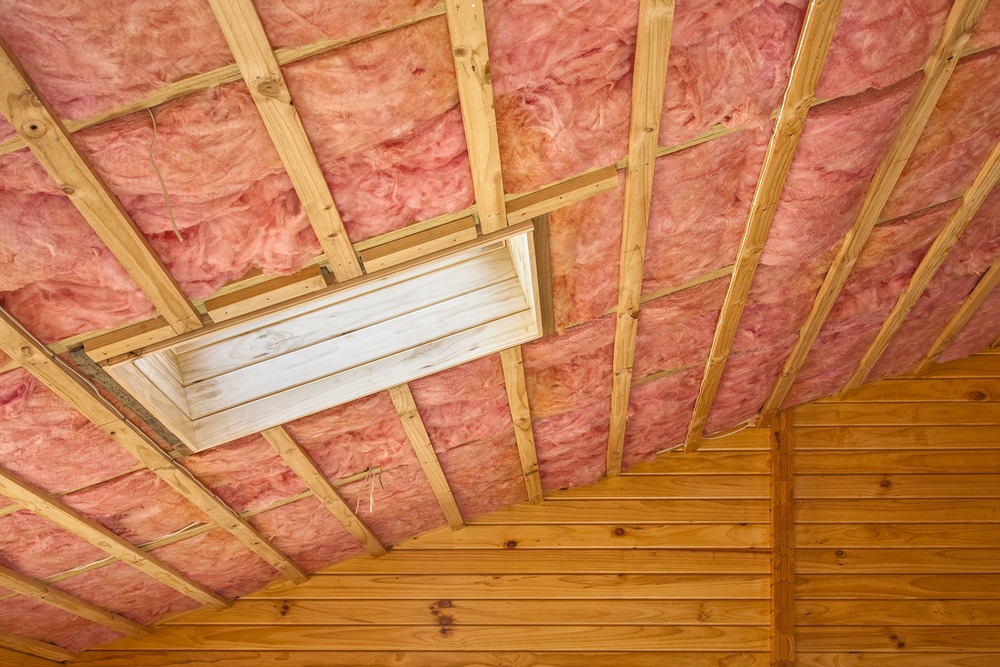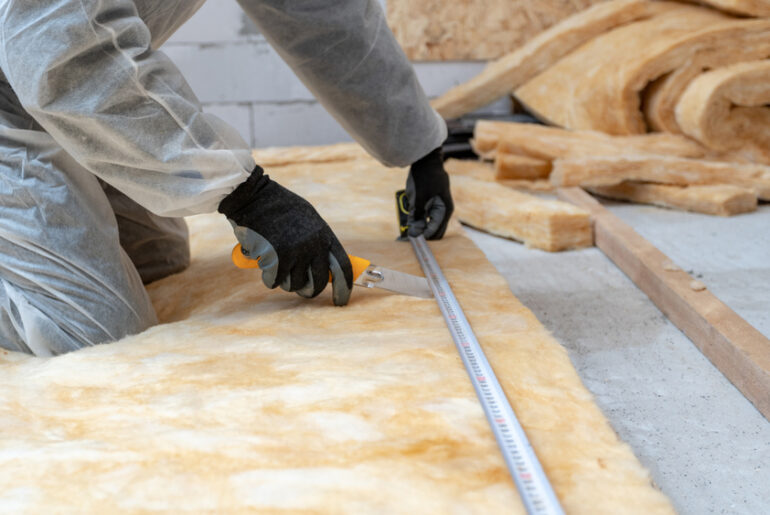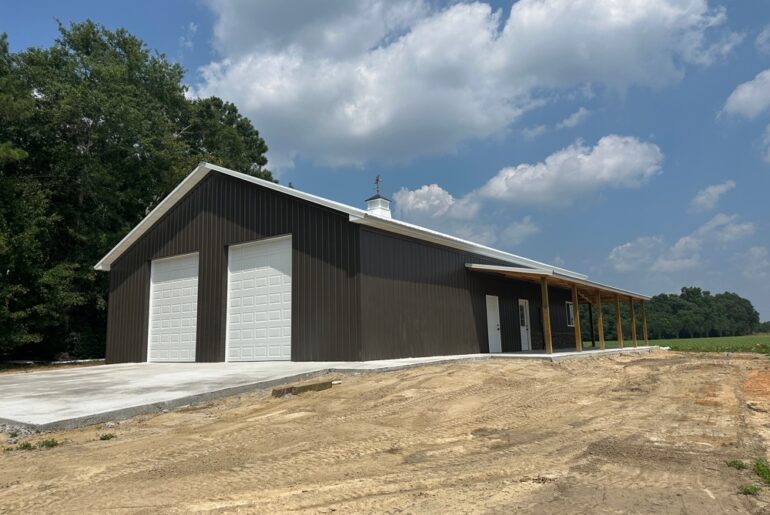The primary job of insulation material is to resist thermal transfer. It means that it helps to keep heat in during the winter and out during the summer. But insulation materials also have other essential characteristics. One of those is the ability to reduce noise.
How does insulation work to reduce noise? It works by creating a barrier between the two surfaces trying to generate the noise. The insulation material will help dissipate the sound waves, so they are not as loud.
Different types of insulation materials can be used to reduce noise. The most common type of insulation is fiberglass. Here’s an overview of whether fiberglass insulation can reduce noise in residential spaces.
Is Fiberglass Insulation Good For Soundproofing?
Many homeowners want insulation to help with soundproofing their homes. Fiberglass insulation is an excellent option to help with this, as it can block out a lot of noise.
It can be installed in different ways, depending on the area that needs soundproofing. For example, you can install it in walls, ceilings, and floors.
Fiberglass insulation is made from glass fibers that are spun into a mat. This mat is then used to make insulation batts or blankets. The glass fibers trap air, which helps to reduce noise.
The mechanism that helps with soundproofing is known as “air entrapment.” When air is trapped, it creates a barrier that sound cannot penetrate.
Fiberglass insulation is also fire-resistant and does not absorb water. It is also mold-resistant, which is essential in areas where mold can grow.
Besides adding fiberglass insulation, there are some other soundproofing techniques that you can use. For example, you can add mass to the walls by adding drywall or acoustic panels.
An acoustic panel is a piece of material that absorbs sound. It is usually made of fiberglass or another material that can trap sound.
You can also create a sound barrier by using a soundproofing sealant. The sealant will create a gap between the wall and the drywall, which will help to block out noise.
Or, you can use soundproofing paint to help with soundproofing. The paint will create a barrier between the wall and the room. It will help block out the noise.
When using fiberglass for noise reduction, you can use batts or blankets. Both options will work to help with soundproofing.
The main difference between the two is the installation process. Batts are easier to install but are not as effective at blocking out noise.
Blankets are more effective, but they are more challenging to install. If you are unsure about which option to choose, you can consult with a professional.
Where to Install Fiberglass Insulation for Noise Reduction?
The attic is the ideal place to install fiberglass insulation for noise reduction. The attic is typically above the living space, so it will help to block out noise from upstairs.
You can install it on the walls if you live in an apartment. However, it is vital to ensure that the insulation is installed correctly to achieve the best results.
You can also install fiberglass insulation on the floors. It will help to reduce the noise from downstairs. If you soundproof a room, you can add insulation to the doors and windows.
How Much Does Fiberglass Reduce Sound?
Research shows that fiberglass can lower noise levels by 3 to 5 decibels. However, this depends on the installation. If the fiberglass is not installed correctly, it will be less effective at reducing noise.
To maximize the sound-reducing effects of fiberglass, install it in a way that creates an airtight seal. It will prevent outside noise from coming in and help insulate the room.
When determining how effective a material is at soundproofing, we also need to look at the Noise Reduction Coefficient. It is the measure of how much a material can reduce noise. For example, fiberglass has an NRC of 0.90 to 0.95, reducing noise by 90% to 95%.
Let’s say there are 100 decibels of noise outside, and you’re trying to block it out. If the fiberglass is installed correctly, it will reduce the noise by 95 decibels. So, inside the room, you will only hear 5 decibels of noise.
Likewise, the Sound Transmission Class is a method of measuring how well a material can block noise. For example, it compares the noise-reduction abilities of floors, walls, doors, windows, ceilings, etc.
The STC measures decreased decibel count when sound passes through a particular wall or material. The STC rating of a quiet room is 40.
Meanwhile, the minimum STC requirement for ceilings, floors, and walls is 50, per the International Building Code. If you use a 3-1/2″ thick fiberglass insulation in your home’s wall cavities, the STC rating will stay in the range of 35 to 39.
That means it will still be below the international code’s requirements. But, if you combine it with other soundproofing materials, such as drywall, the STC rating will be high enough.
It’s also essential to understand how fiberglass soundproofs a room. When sound waves hit fiberglass insulation, they cause the fibers to vibrate.
These vibrations create friction, and this makes the sound waves lose energy. The sound waves eventually die out, which is how fiberglass reduces noise.
The same mechanism that fiberglass uses for thermal insulation is the one that allows it to reduce noise. When heat travels through fiberglass, the same thing happens.
Are There Other Insulation Materials Better For Soundproofing?
Several other insulation materials can be used for soundproofing other than fiberglass. Here are some of them.
Blown-In Cellulose Insulation
Cellulose insulation is made from recycled paper products and is one of the most eco-friendly insulation materials available. It’s also very effective at blocking noise.
Cellulose insulation can be applied to walls, ceilings, and floors. It’s also relatively easy to install yourself if you’re handy with a few tools. Loose-fill fiberglass is also effective at blocking noise, but not as effective as blanket insulation.
Spray Foam Insulation
Spray foam insulation is another effective soundproofing material. It’s made from a mixture of chemicals sprayed onto surfaces.
Once it dries, it forms a solid barrier that effectively blocks noise. Spray foam insulation is more expensive than cellulose insulation but is also more effective.
Mineral Wool
Many people are unaware that mineral wool can be used for soundproofing. It’s usually used in industrial applications, but it’s very effective at blocking noise.
Mineral wool is made from molten rock that’s been spun into fibers. It’s very dense and does a great job of blocking noise through walls and floors.
Tips For Improving Fiberglass Soundproofing Qualities
Fiberglass itself is excellent for soundproofing, but there are a few things you can do to make it even better. First, ensure the fibers are all pointing in the same direction. Then, it will minimize sound waves bouncing around inside the material.
Second, add a layer of mass-loaded vinyl to one side of the fiberglass. It will help to block low-frequency sounds that fiberglass alone isn’t as effective at blocking.
It’s also essential to ensure no gaps or cracks in the fiberglass. If there are, the sound can travel through them easily. Use caulk or another sealant to fill in any gaps.
Finally, make sure that the fiberglass is properly installed. If it’s not flush against the wall or ceiling, the sound will be able to travel around it. For even better results, you can also combine fiberglass with other soundproofing methods mentioned earlier, such as a sound barrier or soundproofing foam.





